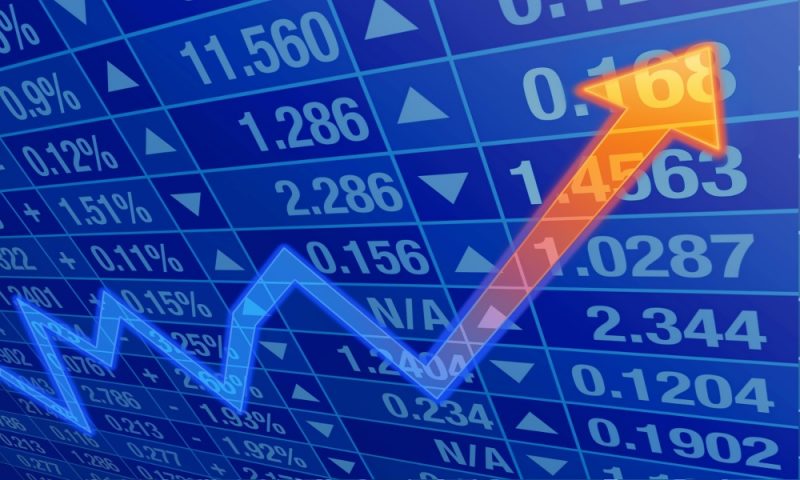Asia : Shares hit 1-year high, dollar slips on weaker U.S. data

SINGAPORE/TOKYO : Asian shares hit a one-year high on Wednesday while the dollar and Treasury yields slid on weak U.S. productivity data and sterling recovered from a one-month low.
MSCI’s broadest index of Asia-Pacific shares excluding Japan .MIAPJ0000PUS rose 0.35 percent to the highest level since August 2015. Japan’s Nikkei .N225 fell 0.3 percent, pulled down by a stronger yen.
Taiwanese shares .TWII climbed to the highest in 13 months on Wednesday, and were last trading flat.
Hong Kong’s Hang Seng index .HSI rose 0.6 percent, hovering close to its highest level since November. China’s CSI 300 index .CSI300 and the Shanghai Composite .SSEC were little changed.
South Korean stocks were also flat, after earlier touching a nine-month high.
Wall Street eked out gains on Tuesday following a strong session for European stock markets, with Germany’s DAX index .GDAXI jumping 2.5 percent to its highest of 2016 on strong earnings from reinsurer Munich Re (MUVGn.DE) and telecoms group Altice (ATCA.AS).
MSCI’s world index .MIWD00000PUS covering 46 markets advanced 0.2 percent, close to the level that it hit on Tuesday – the highest in almost a year.
“Following strong U.S. payrolls data last week, we are in a sweet spot where the U.S. economy seems to be doing okay while the chances of a near-term Fed rate hike are still relatively small,” said Hirokazu Kabeya, chief global strategist at Daiwa Securities.
“Earnings in the U.S., Europe and Japan are not bad. So we may be seeing something of a ‘Goldilocks’ market globally,” he added.
But data showing weak U.S. productivity weighed on U.S. bond yields, with the 10-year notes yield US10YT=RR dipping to 1.5367 percent from Monday’s two-week high of 1.616 percent.
“Low U.S. productivity growth could suggest the third quarter growth can’t be fantastic. That in turn would mean the Fed will not need to raise rates,” said Masahiro Ichikawa, senior strategist at Sumitomo Mitsui Asset Management.
The dollar was weak against most other currencies. It slipped 0.7 percent to 101.17 yen JPY=, giving up all its gains so far this week. The euro rose 0.25 percent to $ 1.1145 EUR=, extending its recovery from Friday’s one-week low of $ 1.1046.
The dollar index, which tracks the U.S. currency against a basket of six peers, retreated 0.4 percent to 95.814.
Additionally, the Bank of England’s reverse bond auction failed to meet its target on Tuesday, highlighting the scarcity of investors willing to sell from a quickly dwindling pool of long-term bonds with positive yields.
The 10-year UK gilts yield was at 0.577 after hitting a fresh record low of 0.563 percent GB10YT=RR after the BoE fell 52 million pounds ($ 68 million) short of its target to buy more than 1 billion pounds of long-dated UK government debt. That was the first time it failed to find enough sellers since it started its quantitative easing program in 2009.
The British central bank announced last week that it would be increasing its bond buying in addition to cutting interest rates in the latest effort to stimulate the country’s economy.
The British pound recovered 0.5 percent to $ 1.3063, after hitting a one-month low of $ 1.2956 GBP=D4 on Tuesday as Bank of England policymaker Ian McCafferty said the central bank will probably have to loosen monetary policy further if the UK’s economy worsens.
The dollar’s weakness gave gold XAU= a leg up, with the precious metal gaining 0.6 percent to $ 1,348.13 an ounce.
Oil prices slipped after a surprise U.S. crude stockpile build rekindled worries about a persistent global glut.
Brent futures LCOc1 fell 0.1 percent to $ 44.95 per barrel, after losing 0.9 percent on Tuesday. U.S. crude CLc1 also slipped 0.1 percent to $ 42.70, extending Tuesday’s 0.6 percent decline.

